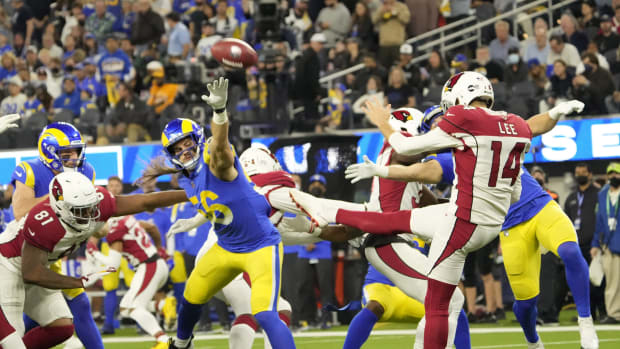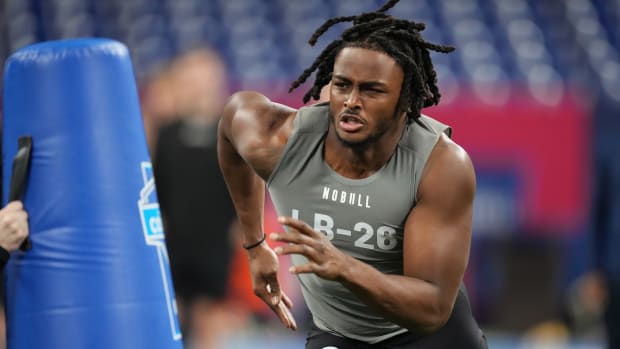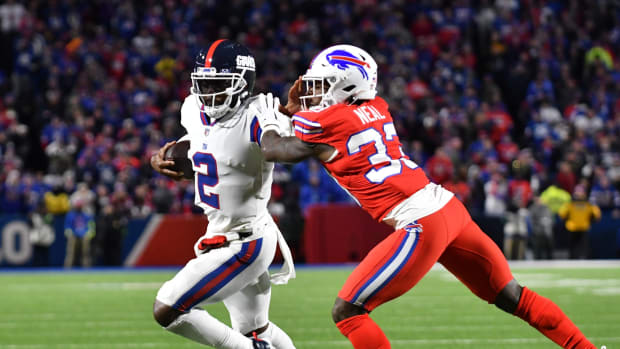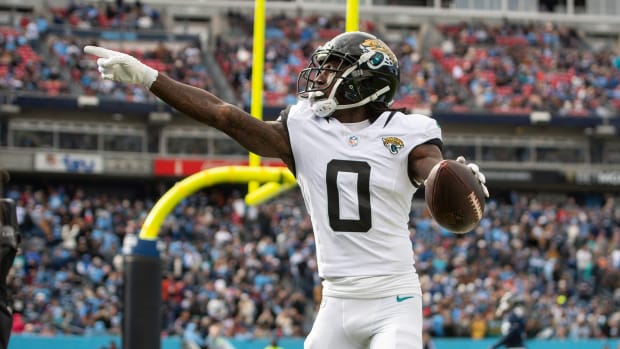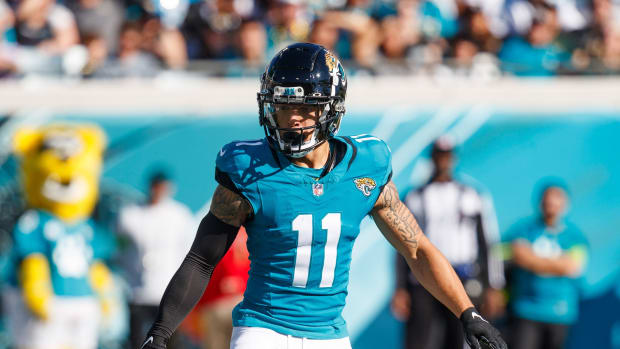Five Takeaways From the NFL Draft and What They Tell Us About the 2019 Season
Every year, the NFL draft serves as a checkpoint. Teams’ draft decisions, taken in the broader context of the offseason, offer valuable insight into how front offices view their own rosters and outlooks for the next season. The positions teams opt to draft or bypass in early rounds and the trades teams decide to make are not only indicators of the talent available, but also where each team stands with the season just over four months away. The draft isn’t an all-telling entity; nobody will know the winners and losers for years. The draft is a collection of data points, a group of decisions from team executives that have different motivations and goals with each pick. Some of those decisions are more enlightening than others.
Here’s what we learned from some of those picks:
1.The Saints’ all-in pursuit of a Super Bowl continues
Another year, another offseason of the Saints sacrificing part of their future to win right now. Last year, GM Mickey Loomis traded New Orleans’s 2019 first-round pick to move from No. 27 to No. 14 to draft pass-rusher Marcus Davenport. Entering this offseason without a first-round pick, and with little cap space at their disposal, it seemed like the Saints would be mostly content to run it back with a roster that came a blown call away from the Super Bowl. So what did the Saints do? They pushed more chips to the middle of the table.
First, New Orleans was surprisingly active in free agency. Likely sensing a shrinking championship window around 40-year-old Drew Brees, New Orleans converted Brees’s $21.6 million roster bonus and base salary into a signing bonus, which freed up $10.8 million in cap space to use in free agency. With more room to maneuver, the Saints brought in Jared Cook to bolster their passing game, Latavius Murray to replace the departed Mark Ingram, and Malcolm Brown to fortify the interior defensive front. They also brought back Teddy Bridgewater. By restructuring Brees’s deal, though, the Saints essentially doubled the dead money they’ll carry in 2020 if Brees doesn’t return (from $10.5 million to $21.3 million). Of course, the Saints could restructure again if Brees does come back after this season, but the dead money isn’t going away.
In the draft, Loomis gave up a 2020 second-round pick to jump from No. 62 to No. 48 to take Erik McCoy, a pro-ready center who fills a major need after Max Unger’s retirement this offseason (even with the signing of center Nick Easton in free agency).
In the past two offseasons, the Saints have shown a bold propensity to mortgage part of their future to bet on the present. With a 40-year-old quarterback, it’s hard to fault them, but the stakes keep getting higher for Sean Payton & Co.
2. The Steelers make their move
Consider this quote Mick Mayock relayed to SI’s Albert Breer in February: “You look at the way the Ravens have drafted over the years with Ozzie [Newsome], or Kevin Colbert and the Pittsburgh Steelers. You look at that, you go, ‘OK, those guys know what a Pittsburgh Steeler looks like and smells like.’”
The 2019 draft proved no different for Pittsburgh. The Steelers love their linebackers, and they uncharacteristically moved up from 20 to 10 to get one in Michigan’s Devin Bush. Counting Bush, five of the Steelers’ last seven first-round picks have been linebackers. The Steelers desperately needed some semblance of Ryan Shazier’s speed in the middle of their defense, and Bush is just about the closest thing they could’ve found. And, to add to the intrigue of the Steelers’ roller-coaster offseason, it was the high-profile departures of Antonio Brown and Le’Veon Bell that made a move up for Bush possible. GM Kevin Colbert says he wasn’t willing to have fewer than two picks on Day 2 in a draft as deep this year’s, so having the No. 66 overall pick from the Brown trade made Colbert comfortable dealing the team’s original second-rounder. Colbert also said the decision to part with a 2020 third-round pick was easier knowing a compensatory pick is likely coming after losing Bell in free agency.
The trade up for Bush marks the third time the Steelers have traded up in the first round since Colbert started with the Steelers in 2000. The other two deals produced Troy Polamalu, a Hall of Famer, and Santonio Holmes, a Super Bowl MVP. No pressure, Devin.
Using the two third-round picks he kept, Colbert made two quintessential Steelers moves. At 66, he took Toledo wide receiver Diontae Johnson, a route-running specialist who plays inside out in a similar mold to Antonio Brown, and Michigan State cornerback Justin Layne, a long, speedy corner who fits the physical profile the Steelers typically covet at defensive back. This is what the Steelers do. They take linebackers in Round 1, and they find value in mid-round wide receivers better than any team in the NFL.
Ben Roethlisberger’s two-year extension signaled he has no plans to retire soon. The Steelers, in trading up for Bush and breaking with past philosophy to be real players in free agency, have shown a commitment to maximizing their championship window. Most AFC North headlines will revolve around Brown, Bell and the Browns’ exciting collection of young talent, but the Steelers have quietly replenished the roster.
3. The arc of Russell Wilson’s career is an exhibition in team building
When the Seahawks handed Russell Wilson a four-year, $140 million contract, they knew their roster budgeting would have to change. With Wilson set to account for upward of 15% of the cap in future years, the Seahawks had to add younger and cheaper players. So, GM John Schneider shipped defensive end Frank Clark off to Kansas City for draft picks, and there began Seattle’s quest to pillage the league of every last draft pick it could.
The Seahawks went into the draft with a league-low four picks, and came out with 11. Counting the Clark trade, which netted the No. 29 overall pick (plus a 2020 second-rounder), the Seahawks traded back four times over the course of the draft. Knowing they’ll have Wilson’s contract on the books, the Seahawks had to add cost-controlled players on rookie contracts to fill out the roster, and trading back allowed them to do that.
Interestingly, the arc of Russell Wilson’s career mirrors the two ends of NFL roster construction at the extremes. When Wilson came into the league and became the Seahawks’ starter as a third-round pick, he was drastically underpaid, and Seattle could allocate its salary cap to strengthen other areas of the roster (this is in part how Seattle built the league’s best defense). Now, Wilson is the highest-paid player in league history, and the Seahawks can’t pay everyone, which makes players on rookie deals much more important as a means to extract every ounce of possible value from the roster. Even if most of Seattle’s 11 picks flame out, accumulating as many selections as possible increases the odds off getting at least a couple key contributors.
Independently of the picks themselves, Seattle’s ever-morphing team-building strategy with Russell Wilson is a fascinating window into how the rookie wage scale has affected team-building in the modern NFL. For teams with quarterbacks on the cusp of getting massive deals—like the Eagles with Carson Wentz, the Cowboys with Dak Prescott, and the Rams and Chiefs with Jared Goff and Patrick Mahomes down the line—Seattle’s 2019 draft offers a probable, albeit a bit extreme, look into the future.
4. The Packers trust offensive improvement will come from Matt LaFleur
The Packers took two defensive players in the first round, EDGE Rashan Gary and safety Darnell Savage Jr. Counting Gary and Savage, the Packers’ last eight first-round picks have been defensive players. A driving force in that trend, of course, is Aaron Rodgers, who can elevate his teammates in a way few quarterbacks in the league can. On its face, this makes sense. The Packers finished No. 7 in the NFL in offensive DVOA and No. 29 in defensive DVOA. But, the Packers didn’t fire Mike McCarthy and bring in Matt LaFleur as head coach to improve the defense. More than anything else, LaFleur, a Kyle Shanahan and Sean McVay disciple, will be tasked with building a strong relationship with Aaron Rodgers and turbo-charging an offense with arguably the best quarterback in football.
Green Bay lost Randall Cobb to Dallas this offseason, though it seems team president Mark Murphy and GM Brian Gutekunst are content with the receivers already on the roster. Davante Adams is a star, but here are the top options behind him: a declining Jimmy Graham, Marquez Valdes-Scantling, Equanimeous St. Brown and Geronimo Allison—not exactly weapons that will put fear into the minds of opposing defensive coordinators. The Packers picked tight end Jace Sternberger in the third round, which should give Rodgers an athletic pass-catcher in the middle of the field, but he isn’t a transformative offensive piece.
Without Cobb or a clear candidate to replace his role, it appears the Packers will lean on LaFleur’s mind and Rodgers’s arm to take their offense to the next level. Rodgers still has Adams to rely on down the field, but the Packers’ decision not to upgrade at wide receiver puts LaFleur’s offensive system under increased scrutiny. Whether or not LaFleur’s offense can harness Rodgers’s talent will define the Packers’ season.
5. The Ravens are concocting a fascinating offensive experiment
When Lamar Jackson took over as the Ravens’ starting quarterback in Week 11 last season, Baltimore’s offense drastically changed. With Joe Flacco as quarterback to start the season, the offense was predicated on downfield passing concepts that played to Flacco’s arm strength. With Jackson, the offense became something straight from the 1970s, a multi-pronged run-first attack that used Jackson’s legs and mobility to create deception.
Now, Jackson’s back in Baltimore and Flacco isn’t, and Greg Roman takes over as offensive coordinator for Marty Mornhinweg. The Ravens’ biggest question, then, becomes how the offense, which was unlike anything else in the league at the end of last season, will evolve in Jackson’s second season. The draft offered some clues. (Hint: speed. Lots of speed.)
At No. 25, the Ravens took wide receiver Marquise Brown, a 166-pound deep threat with blistering speed. Brown is a particularly interesting fit with Jackson, who threw deep on just 9% of his attempts last season—the fewest in the NFL, per Pro Football Focus. Brown’s calling card is his ability to get vertical from the slot, so it’s logical to assume the offense will open up a bit and Jackson will take more deep shots with a player like Brown sprinting down the field. Even if Jackson doesn’t go deep much more next season, a player like Brown should make him more explosive and efficient when he does. Plus, Brown’s speed is conducive to the longer-developing plays that tend to happen with a scrambler like Jackson, who had a higher time-to-throw (3.1 seconds) than every quarterback in the league except Josh Allen last season, according to Next Gen Stats.
In the third round, the Ravens picked receiver Miles Boykin, a 6’4” big-bodied downfield target with 4.42 speed. Boykin is ready-made for jump balls and red-zone opportunities, which complements Brown’s separating skills nicely. In the fourth round, Baltimore added running back Justice Hill, who brings 4.4 speed to a backfield that already has Mark Ingram and Gus Edwards.
Brown, Boykin and Hill signify Baltimore’s desire to get more explosive around Jackson this season. In a run-first offense that includes a lot of quick-hitting throws, having players that can run away from defenders is an important way to manufacture big plays, especially if your quarterback can’t win consistently down the field (the jury is still out on Jackson there). As it currently stands, Baltimore has three good tight ends in Mark Andrews, Hayden Hurst and Nick Boyle. The Ravens also have a proven stable of physical running backs. Now, they have the speed that will move defenders around and create space in the box. The Ravens will enter 2019 with one of the most interesting offenses in the league.
• Question or comment? Email us at talkback@themmqb.com.
































